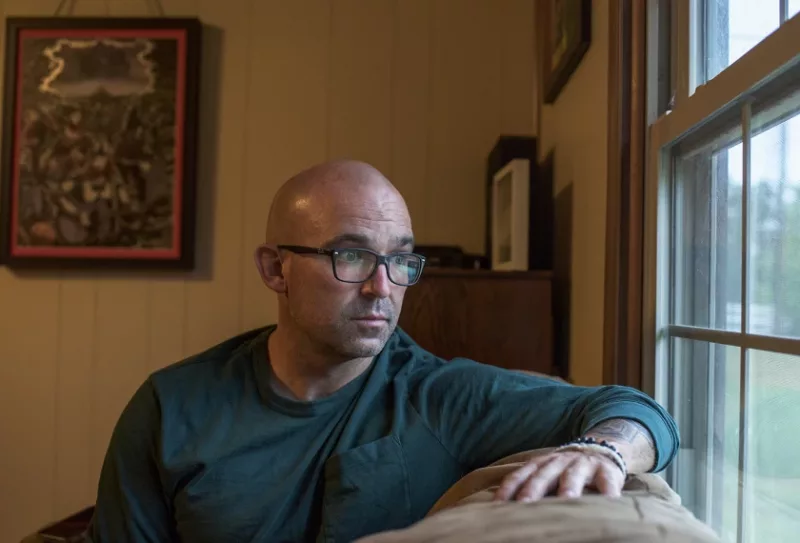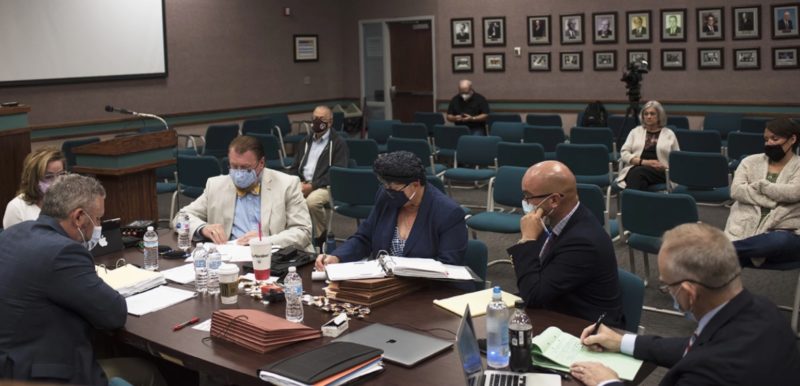He Taught About White Privilege and Got Fired. Now He’s Fighting to Get His Job Back
Share
Explore Our Galleries
Breaking News!
Today's news and culture by Black and other reporters in the Black and mainstream media.
Ways to Support ABHM?
By Eesha Pendharkar, Education Week
Blountville , Tenn. –
Matthew Hawn, a social studies teacher in rural Tennessee, was driving to work listening to NPR at the beginning of last school year when he heard a report on what was unfolding in Kenosha, Wis.
A white police officer had shot and injured Jacob Blake, an unarmed Black man, during a call about a domestic disturbance. Two days later, as protests engulfed the small city over Blake’s shooting, Kyle Rittenhouse, a white teenager, shot and killed two people before walking by police. He was unharmed.
Hawn knew what he’d be talking about in his Contemporary Issues class that day.

Over the next several months, Hawn, 43, used the news cycle to show students, almost all of whom are white, how systemic racism is an indisputable element of American life.
He has since appealed the dismissal and is currently suspended without pay. His case is expected to be decided in mid-October.
In early February, after the insurrection at the U.S. Capitol, Hawn assigned a controversial Ta-Nehisi Coates essay called “The First White President,” which pairs the history of white supremacy with the rise of President Donald Trump. During the spring trial of former Minneapolis police officer Derek Chauvin, accused of murdering George Floyd, an unarmed Black man, he had students dissect a provocative spoken word poem titled “White Privilege” by Kyla Jenée Lacey.
After each lesson, parents complained to administrators, who in turn admonished Hawn….On May 10, Hawn was fired.
During a hearing on Aug. 17, Hawn and his lawyer, sitting in front of a dozen supporters — some wearing “I stand with Hawn” shirts — argued that the district took his lessons out of context. They said district administrators did not give him the proper resources or training to address racially volatile news events, and after taking issue with the way he taught about racism and white privilege, never told him how they expected him to teach those concepts.

His dismissal came three days before Tennessee’s legislature passed into law a series of rules that severely curtail the ways that public school teachers can talk about racism in the classroom. And he became one of the first casualties from the nation’s debate this year over “critical race theory” and whether or how teachers should acknowledge racism in class.
“I don’t even think I even considered not talking about it,” Hawn said in an interview with Education Week. “Because it’s always a contemporary issue, every year it’s a contemporary issue. And so I wouldn’t be doing my job if I didn’t talk about race.”…
Tennessee’s law, which went into effect this school year, prohibits teachers from teaching students that any person is “inherently privileged, racist, sexist, or oppressive, whether consciously or subconsciously,” and from making students “feel discomfort, guilt, anguish, or another form of psychological distress” because of their race or sex. They are also prohibited from teaching that Tennessee or the United States “is fundamentally or irredeemably racist or sexist.”
If teachers “knowingly violate” any portion of the law, they risk losing their license and their school districts could be fined up to $1 million for each offense.
District leaders, teachers, and advocates for students of color in the state fear the law will have a chilling effect on almost all conversations on race.
A parent in Williamson County, Tenn., has already cited the law in a complaint that alleges that a teacher’s lesson on Ruby Bridges, the 6-year-old girl who became the first African American student to integrate a school in the South, made her child feel uncomfortable.
More Breaking News here.
Learn more about Critical Race Theory and the controversy over teaching about systemic racism here and here.
Check out this video about what happened in the affluent community of Southlake. On paper, Southlake was a picture-perfect suburb: beautiful homes and excellent schools. But in 2018, a viral video of students using racial slurs in the mostly white school district created a searing divide in the once close-knit Texas community. What played out in Southlake – and the ensuing fight over proposed diversity plans – foreshadowed others across the country as peaceful neighborhoods descended into bitter arguments over diversity, education and critical race theory.









Comments Are Welcome
Note: We moderate submissions in order to create a space for meaningful dialogue, a space where museum visitors – adults and youth –– can exchange informed, thoughtful, and relevant comments that add value to our exhibits.
Racial slurs, personal attacks, obscenity, profanity, and SHOUTING do not meet the above standard. Such comments are posted in the exhibit Hateful Speech. Commercial promotions, impersonations, and incoherent comments likewise fail to meet our goals, so will not be posted. Submissions longer than 120 words will be shortened.
See our full Comments Policy here.